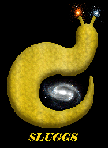SAGES currently has as its main focus a wide-field chemo-dynamical survey of early-type galaxies, "SLUGGS" (the SAGES Legacy Unifying Globulars and GalaxieS Survey), which capitalizes on the unmatched observing power of the Subaru/Suprime-Cam imager and the Keck/DEIMOS spectrograph, combined with models to interpret the observations in a cosmological context.
In particular, spectroscopy of the near-infrared calcium triplet furnishes kinematic and metallicity information of stars (to ~3 effective radii) and globular clusters (to ~10 effective radii) in two dimensions around the galaxies. With this approach, we aim to measure halo properties such as mass, angular momentum, metallicity gradients, orbit structure and substructures. These fundamental characteristics will provide important clues to the assembly histories of galaxies.
 |
An up to date list of published papers along with a general overview of the science gained from the survey is found on the SLUGGS home page. |
| While the
globular cluster observations in SLUGGS follow a standard (but
highly efficient) approach, the galaxy observations are novel.
These constitute the SMEAGOL project
(Spectroscopic Mapping of Early-type Galaxies to their Outer Limits),
which uses DEIMOS in a ground-breaking mode of two-dimensional spectroscopy
called ``Stellar Kinematics with Multiple Slits" (SKiMS). |  |
The SLUGGS survey follows in the spirit of the original SAURON and PN.Spectrograph surveys by including a "representative" selection of 25 nearby systems. It is supported by NSF grants AST-0808099 (PI: Jean Brodie), AST-0909237 (PI: Aaron Romanowsky), and ARC grant DP130100388 (PI: Forbes).